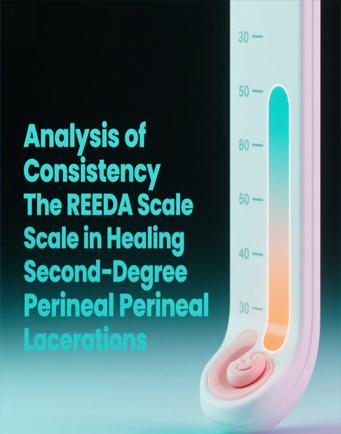Toilet Training Methods for Toddlers and Preschool-Age Children: A Scoping Review of Current Evidence
Downloads
Independence in toileting is a skill that must be achieved throughout the stages of child growth and development. Toilet training (TT) is an important part of child development that can increase independence and minimize disturbances in bowel and bladder control in children. In general, this exercise is performed on children aged 12-36 months (toddlers) and children aged 48-60 months (preschool) depending on each child's readiness. This readiness is commonly shown by the emergence of a child's instinct to defecate or urinate independently. In this process, parents and caregivers play an important role in stimulating independence in children through TT. Unfortunately, most parents and caregivers may find it difficult to initiate, instruct, guide, and demonstrate TT for their child. This review aims to evaluate the effectiveness and applicability of various TT methods based on recent evidence. This review uses the scoping review design by including 3 databases in the search strategy: EBSCO-host, PubMed, and Scopus. All keywords used are synthesized from the PICO were “Toddlers” AND “Preschool Children” OR “Preschool Child” AND “Toilet Training” OR “Potty Training” AND “Toileting”. This study only reviews the results of primary studies from the past five years (2018-2023), published in English or Bahasa, and with experimental designs. Children with a history of functional gastrointestinal and urinary tract disorders were excluded from the study. The methodological validity and risk bias of each study is included in this review using the Joanna Briggs Institute (JBI) instrument. The main findings in this review study indicate that there are 7 types of toilet training interventions that have been developed and implemented. There are The AAP Guideline, The DAP Guideline, The Application of TT, AI Technology, Storytelling Treatment, Hypnoparenting, and TT Demonstration. Findings show that most interventions focus on individual or group settings with additional techniques like demonstration and storytelling. Parents and caregivers, including pediatric nurses, can consider TT method adapted from The AAP Guideline to improved toilet training process among toddlers and preschool-age children.
Agusniatih, A., & Suwika, I. P. (2022). The Effectiveness of Toilet Training on Children’s Independence Through Demonstration Methods. Jurnal Pendidikan Usia Dini, 16(2), 240–248.
Ariani, S., & Rufaida, E. (2022). The Importance of the Role of Parents in Ability Toilet Training for Pre-School Children. ABDIMAS: Jurnal Pengabdian Masyarakat, 5(2), 2219–2224.
Azrin, N., & Foxx, R. M. (2019). Toilet training in less than a day. Gallery Books.
Baird, D., Bybel, M., & Kowalski, A. W. (2019). Toilet training: Common questions and answers. American Family Physician, 100(8), 468–474.
Barker, T. H., Stone, J. C., Sears, K., Klugar, M., Tufanaru, C., Leonardi-Bee, J., Aromataris, E., & Munn, Z. (2023). The revised JBI critical appraisal tool for the assessment of risk of bias for randomized controlled trials. JBI Evidence Synthesis, 21(3), 494–506. https://doi.org/10.11124/JBIES-22-00430
De Carvalho Mrad, F. C., da Silva, M. E., Lima, E. M., Bessa, A. L., de Bessa Junior, J., Netto, J. M. B., & de Almeida Vasconcelos, M. M. (2021). Toilet training methods in children with normal neuropsychomotor development: A systematic review. Journal of Pediatric Urology, 17(5), 635–643. https://doi.org/10.1016/j.jpurol.2021.05.010
Eke, H., Hunt, H., Ball, S., Rogers, M., Whear, R., Allinson, A., Melluish, J., Lindsay, C., Richardson, D., & Rogers, J. (2021). Improving continence in children and young people with neurodisability: a systematic review and survey. Health Technology Assessment, 25(73), 1–258.
Hasibuan, S. C., Armayani, D., Simatupang, O. F., & Sari, J. (2021). Toilet Training Pada Anak Usia Dini 4-6 Tahun (Upaya Pembentukan Kemandirian di RA Nurul Islam). AUD Cendekia, 1(3), 174–187.
Huh, J., Ann, S., Hong, J., Cui, M., Park, J. Y., Kim, Y., Sim, B., & Lee, H.-K. (2022). Service Design of Artificial Intelligence Voice Agents as a Guideline for Assisting Independent Toilet Training of Preschool Children. Archives of Design Research, 35(3), 81–93. http://dx.doi.org/10.15187/adr.2022.08.35.3.81
Jahanshahi, R., Malekyan, A., & Jouybari, L. (2019). Explore Mothers' Experiences with potty training procedure for young children: A Qualitative Study. Journal of Pediatric Nursing, 6(1), 1-8. https://doi.org/10.21859/jpen-06101
Khorasani, P., Tangestani, A., & Maroufi, M. (2022). Effect of Toddlers’ Daily Toilet Training Program Based on Developmentally Appropriate Practice Approach on Toilet Training Duration. Journal of Research Development in Nursing and Midwifery, 19(1), 13–16. https://doi.org/10.29252/jgbfnm.19.1.13
Maghfuroh, L. (2018). Strorytelling to Improve Toilet Training Success in Preschool Children. Academik Research International, 9(2), 118.
Mansur, A. R., & Andalas, U. (2019). Tumbuh kembang anak usia prasekolah. Andalas University Pres.
Nawawi, N. F. M., & Badayai, A. R. A. (2021). The Effects of Toilet Training on Development of Adaptive Behaviour Among Preschool Children. E-BANGI, 18(6), 251–267.
Nelista, Y., Fembi, P. N., & Elfi, T. (2021). The effect of giving potty training on the skills of defecating and urinating at toddler. Media Keperawatan Indonesia, 4(4), 270. https://doi.org/10.26714/mki.4.4.2021.270-276
Page, M. J., McKenzie, J. E., Bossuyt, P. M., Boutron, I., Hoffmann, T. C., Mulrow, C. D., Shamseer, L., Tetzlaff, J. M., Akl, E. A., Brennan, S. E., Chou, R., Glanville, J., Grimshaw, J. M., Hróbjartsson, A., Lalu, M. M., Li, T., Loder, E. W., Mayo-Wilson, E., McDonald, S., … Moher, D. (2021). The PRISMA 2020 statement: An updated guideline for reporting systematic reviews. The BMJ, 372, 1–11. https://doi.org/10.1136/bmj.n71
Safitri, W. (2021). Education of Hypno-parenting Method on Successfulness of Toilet Learning of Toddlers. Gaster, 19(1), 83–94.
Simon, M., Wilkes-Gillan, S., Chen, Y.-W. R., Cordier, R., Cantrill, A., Parsons, L., & Phua, J. J. (2022). Toilet training interventions for children with autism spectrum disorder: A systematic review. Research in Autism Spectrum Disorders, 99, 102049.
Suryana, D. (2021). Pendidikan anak usia dini teori dan praktik pembelajaran. Prenada Media. Van Aggelpoel, T., De Wachter, S., Neels, H., Van Hal, G., Roelant, E., & Vermandel, A. (2021). Implementing a new method of group toilet training in daycare centres: a cluster randomised controlled trial. European Journal of Pediatrics, 180(5), 1393–1401. https://doi.org/10.1007/s00431-020-03879-y
van Nunen, K., Kaerts, N., Wyndaele, J.-J., Vermandel, A., & Hal, G. Van. (2015). Parents’ views on toilet training (TT) A quantitative study to identify the beliefs and attitudes of parents concerning TT. Journal of Child Health Care, 19(2), 265–274.
Venkatesan, S. (2019). Parenting: A caselets based narrative. Notion Press.
Copyright (c) 2024 JURNAL INFO KESEHATAN

This work is licensed under a Creative Commons Attribution-NonCommercial-ShareAlike 4.0 International License.
Copyright notice
Ownership of copyright
The copyright in this website and the material on this website (including without limitation the text, computer code, artwork, photographs, images, music, audio material, video material and audio-visual material on this website) is owned by JURNAL INFO KESEHATAN and its licensors.
Copyright license
JURNAL INFO KESEHATAN grants to you a worldwide non-exclusive royalty-free revocable license to:
- view this website and the material on this website on a computer or mobile device via a web browser;
- copy and store this website and the material on this website in your web browser cache memory; and
- print pages from this website for your use.
- All articles published by JURNAL INFO KESEHATAN are licensed under the Creative Commons Attribution 4.0 International License. This permits anyone to copy, redistribute, remix, transmit and adapt the work provided the original work and source is appropriately cited.
JURNAL INFO KESEHATAN does not grant you any other rights in relation to this website or the material on this website. In other words, all other rights are reserved.
For the avoidance of doubt, you must not adapt, edit, change, transform, publish, republish, distribute, redistribute, broadcast, rebroadcast or show or play in public this website or the material on this website (in any form or media) without appropriately and conspicuously citing the original work and source or JURNAL INFO KESEHATAN prior written permission.
Permissions
You may request permission to use the copyright materials on this website by writing to jurnalinfokesehatan@gmail.com.
Enforcement of copyright
JURNAL INFO KESEHATAN takes the protection of its copyright very seriously.
If JURNAL INFO KESEHATAN discovers that you have used its copyright materials in contravention of the license above, JURNAL INFO KESEHATAN may bring legal proceedings against you seeking monetary damages and an injunction to stop you using those materials. You could also be ordered to pay legal costs.
If you become aware of any use of JURNAL INFO KESEHATAN copyright materials that contravenes or may contravene the license above, please report this by email to jurnalinfokesehatan@gmail.com
Infringing material
If you become aware of any material on the website that you believe infringes your or any other person's copyright, please report this by email to jurnalinfokesehatan@gmail.com.





































